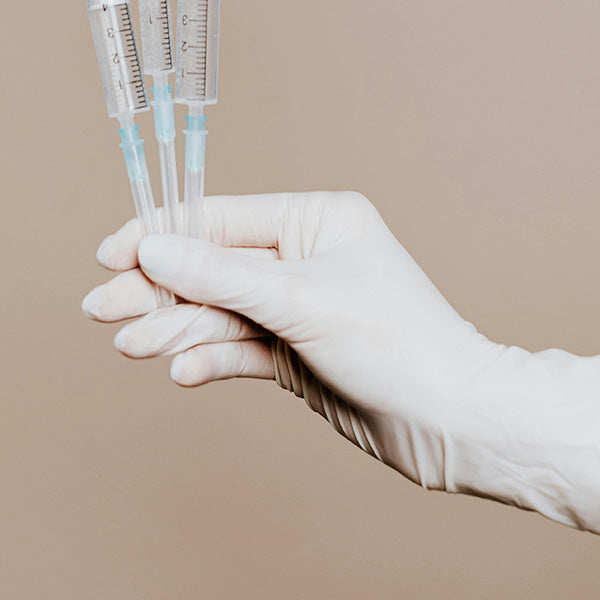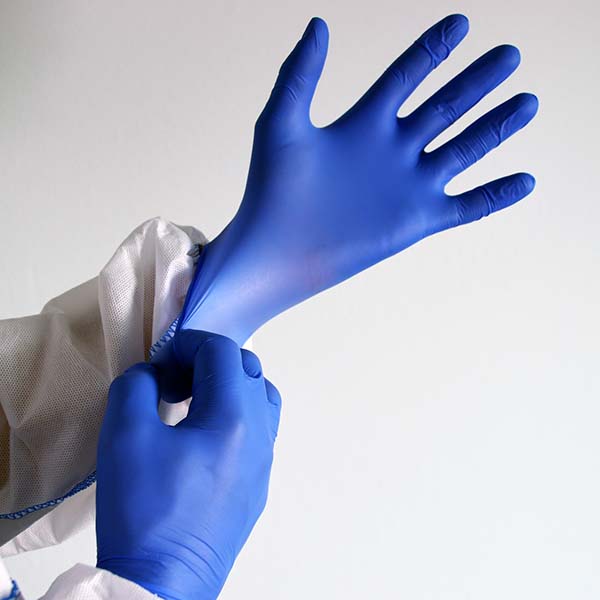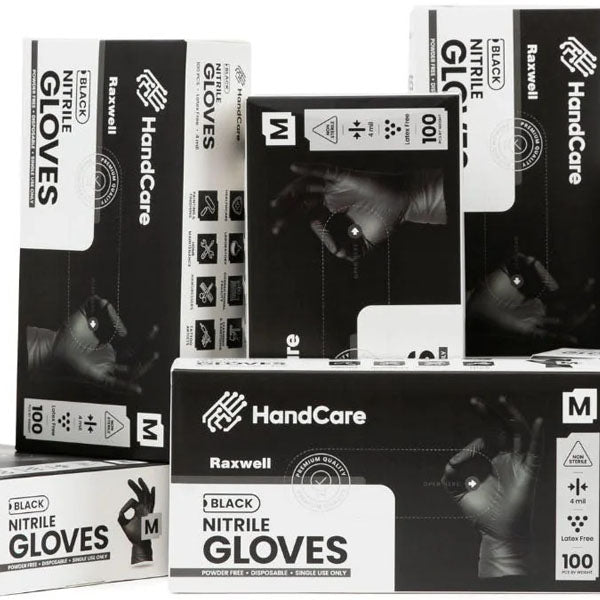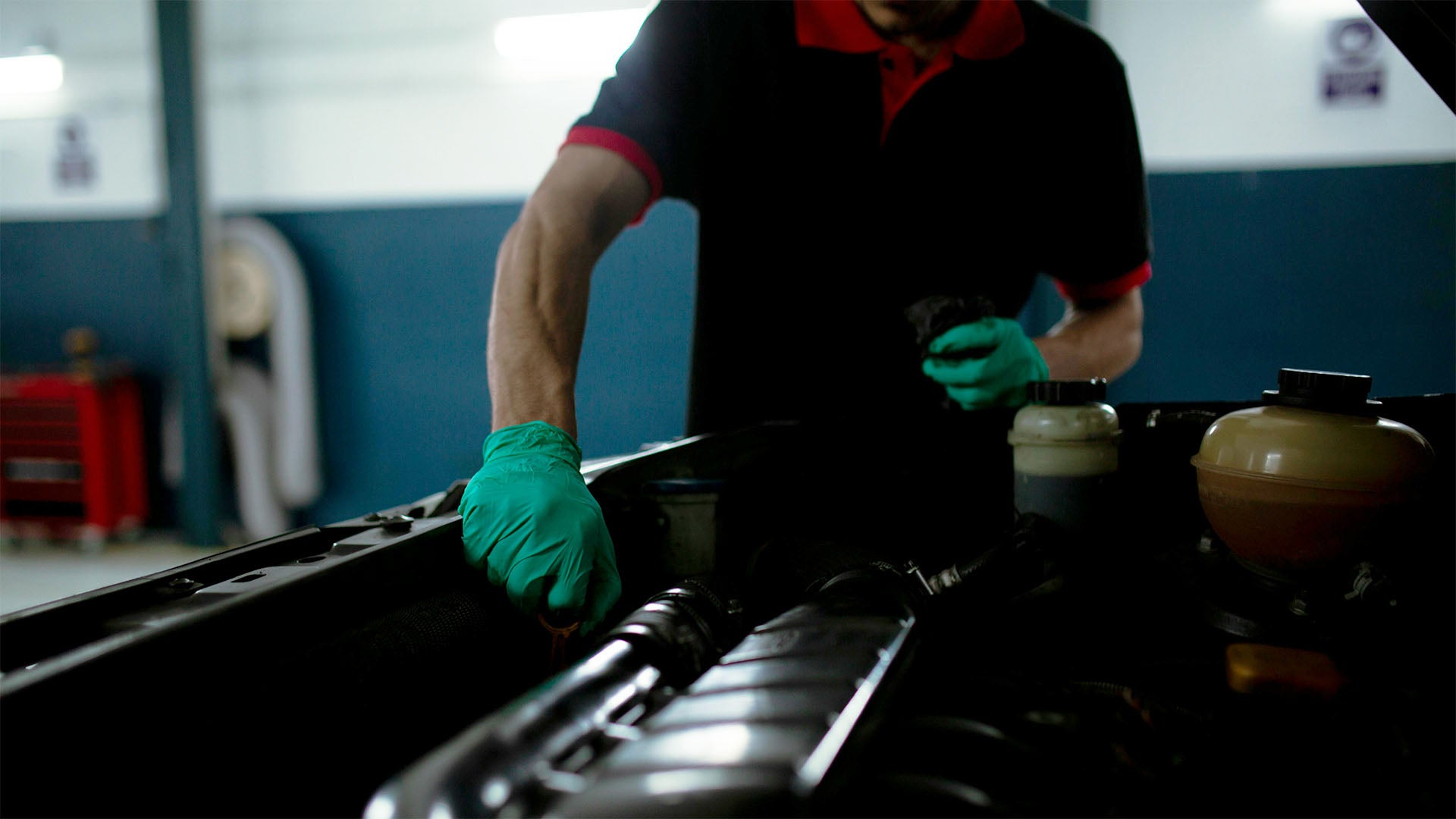Surgical gloves only protect if they remain intact. Some materials are more resilient than others, but that resilience can come at a price. Sometimes, that price is tactile sensitivity. Sometimes, it’s comfort. Sometimes, essential differences are almost imperceptible. This article explains different types of surgical gloves.
Apart from the material from which it’s constructed, the duration of its use also influences the barrier of protection created by a disposable glove, the chemicals it may contact, the specific equipment handled, and even the way it fits.
The United States Pharmacopeial Convention (USP) and the American Society for Testing and Materials (ASTM) stipulate guidelines for handling hazardous drugs, such as USP 800 and ASTM D6978. But what surgical glove types can meet or exceed the highest expectations?
In this article, we'll cover:
Nitrile Surgical Gloves
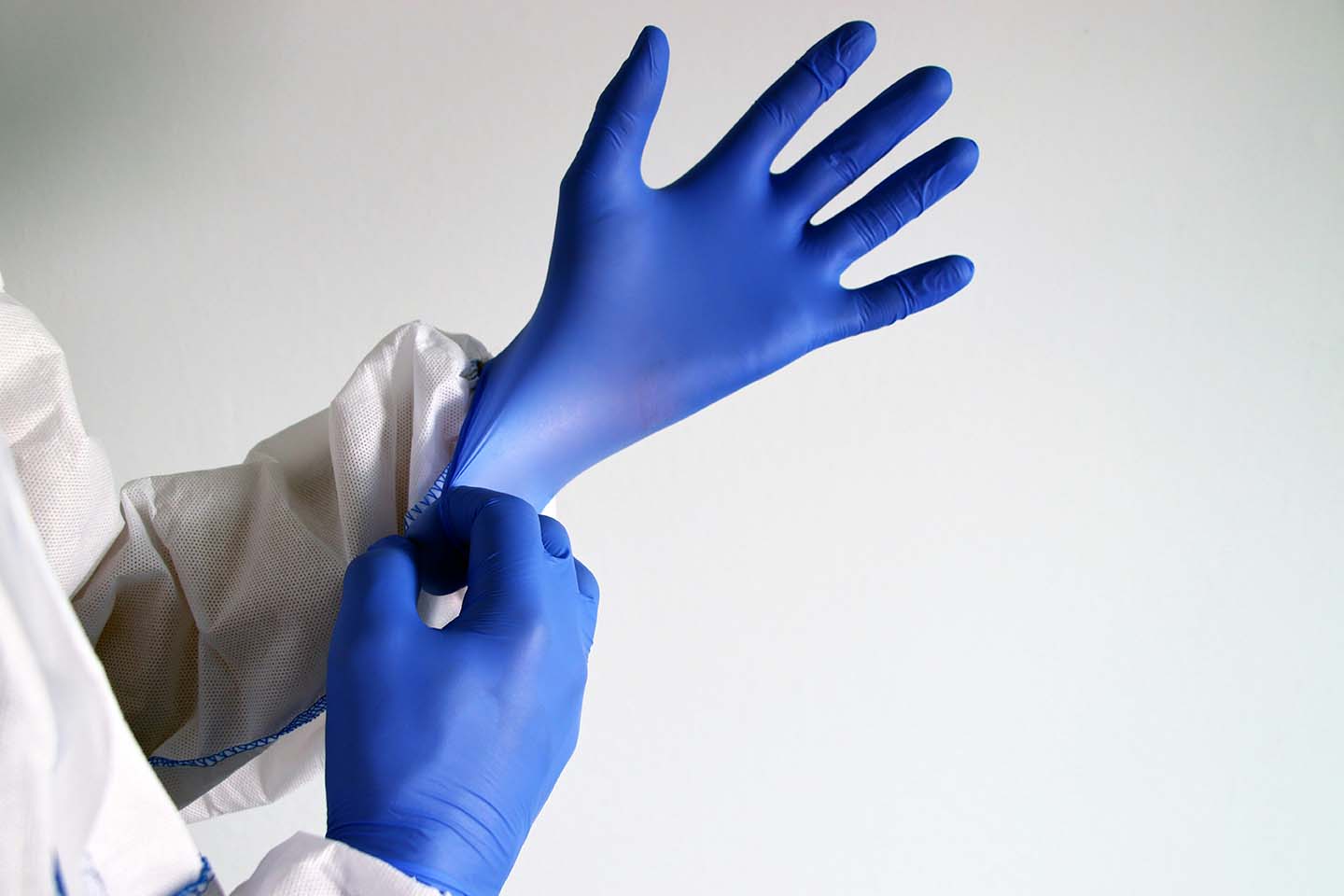
Nitrile surgical gloves are made of nitrile butadiene rubber, a synthetic material primarily made from petroleum. Their durability makes them special.
This material is exceptionally elastic, making it quite resistant to punctures. It’s strongly resistant to chemicals and oils, making it well-suited for various procedures. And it’s more allergy-friendly than its primary competitor, latex gloves.
Nitrile gloves are powder-free, chemo-tested to industry standards, and individually packaged for sterility. In addition to being reasonably priced and available in virtually any color, nitrile gloves offer a much longer shelf life than latex gloves.
Latex Surgical Gloves

Latex is the most popular surgical glove material. It provides a full range of motion and allows the wearer to retain most of their tactile sensation. In surgeries where dexterity and sensitivity count, latex offers clear advantages. It’s also universally considered to be among the most comfortable choices.
However, latex gloves are far more prone to punctures than nitrile gloves. They are relatively permeable when faced with chemicals and won’t provide much protection against common solvents. Most importantly, many people experience an allergic reaction to natural rubber latex.
Powder-free latex is available in both sterile and non-sterile varieties. There is also a huge variety of sizing options to maximize the precision afforded by latex. Latex gloves are a good choice for people primarily concerned with motion control and comfort. However, their lack of durability means you’ll be changing them fairly more often.
Vinyl Surgical Gloves

Made from PVC, vinyl gloves are another oil-based option. Though the absence of latex is an advantage for people concerned with allergies, the anti-static properties of vinyl gloves have little use in surgery.
Compared to nitrile and latex, vinyl gloves exhibit much less elasticity. They’re also considerably less durable and provide significantly less protection against dangerous chemicals and biomedical substances. Vinyl gloves will not hold up against ordinary alcohol-based cleaners.
Vinyl gloves' primary advantage is that they’re inexpensive. As exam gloves, they can be pretty valuable.
But vinyl should be avoided for surgeries. Finding sterile vinyl is challenging, and its material properties simply provide less protection. Vinyl should only be used in inexpensive medical examination gloves.
Polychloroprene Surgical Gloves
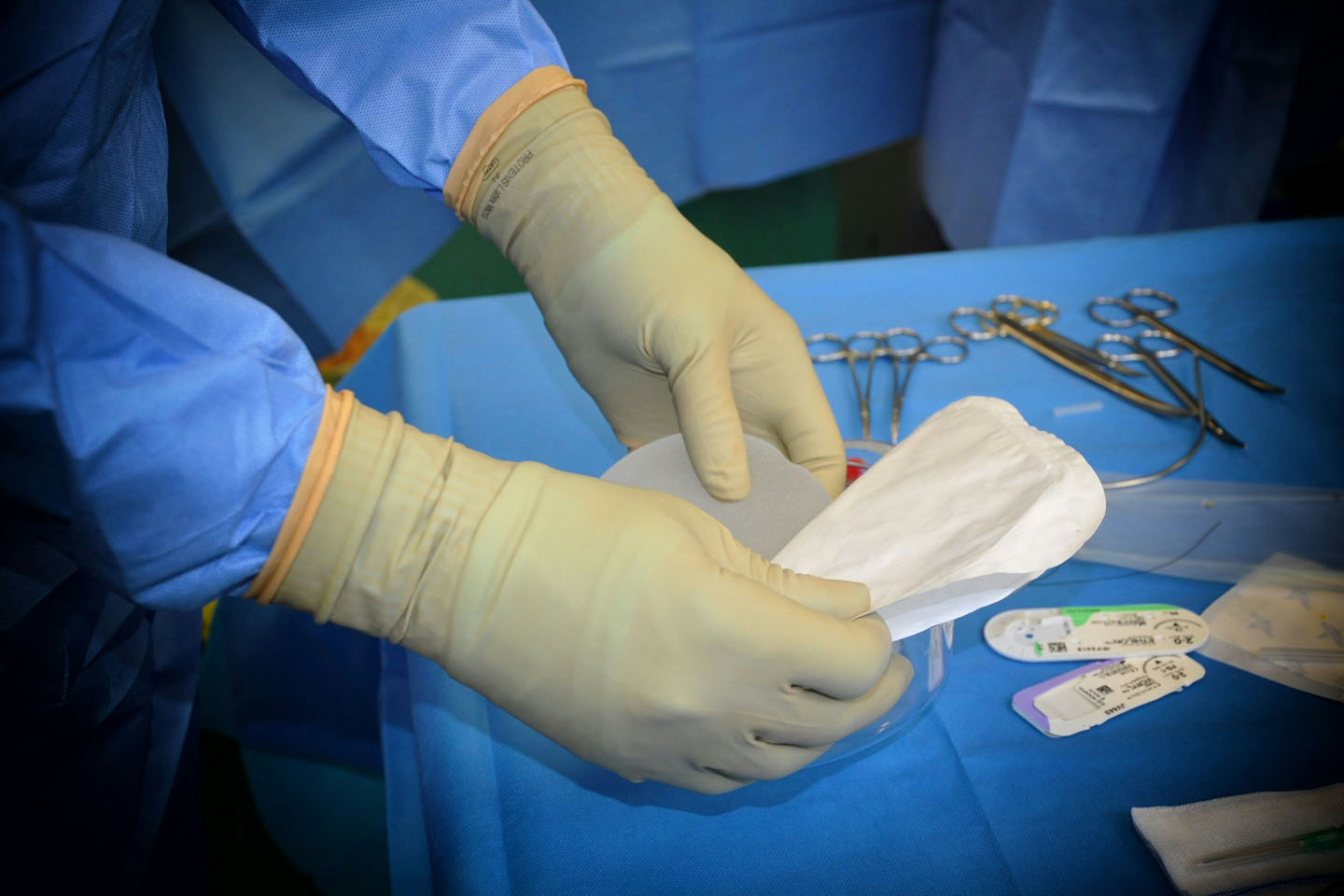
Instead of its lengthy scientific name, polychloroprene is usually known by the brand name Neoprene. It’s a synthetic rubber that was designed to replicate latex closely. The result is gloves with a level of comfort and precision that combines nearly all the advantages of latex with almost all of the benefits of its closest competitors.
Thanks to the material’s synthetic properties, neoprene surgical gloves provide many of the same advantages as nitrile rubber. They’re about equally flexible, comfortable, and chemical resistant. In addition to excellent puncture resistance, neoprene withstands flexing and twisting like no other. It’s also marginally more resilient against abrasion.
However, the most significant advantage of neoprene disposable gloves is that they’re highly resistant to extreme temperatures. Neoprene gloves retain their elasticity even when it’s pretty cold, and they’re not prone to becoming sticky in hot temperatures. Those advantages can be very significant depending on your environment and the surgical procedures you are performing.
Polyisoprene Surgical Gloves
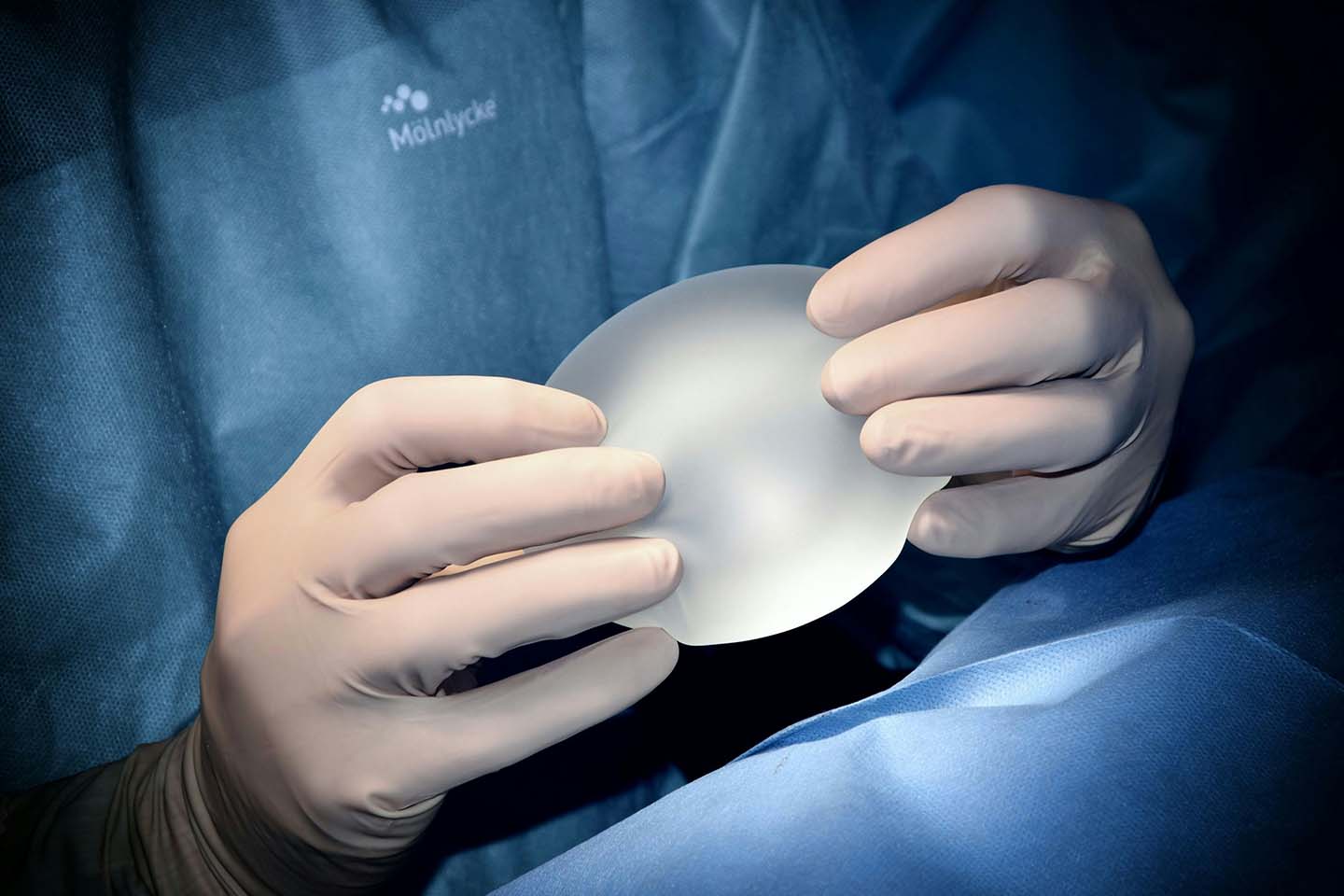
Some people consider polyisoprene the gold standard material for surgical gloves. It matches the high comfort levels of latex with several added benefits.
Polyisoprene is easier to double-glove. A polymer coating makes gloves made from polyisoprene easier to put on when hands are wet or dry. Moreover, polyisoprene gloves are sometimes combined with neoprene gloves to improve overall durability.
For hazardous procedures where the risk of a glove breach is simply unacceptable, polyisoprene is often the best choice. Its robustness also gives it better durability in long procedures.
The tradeoff is that polyisoprene is far and away the most expensive option for disposable gloves. But if you want the properties of latex in a highly protective glove, consider polyisoprene.
Surgical Gloves Types FAQ

How Do I Choose Surgical Gloves?
There are some features that all disposable gloves for a specific purpose require. For example, all medical gloves need to be power-free. The FDA banned powdered surgeon’s gloves as recently as 2017. Additionally, all surgical gloves should be sterile, individually packaged, and provide plenty of size options.
Your next concern is thickness. Thicker gloves protect against punctures and sharp edges but at the cost of flexibility and tactile sensitivity. That means they’re helpful for some procedures but unacceptable for others. For example, the range of motion needed for dental surgeries is not well accommodated by particularly thick disposable gloves.
Generally, if you don’t have to worry about allergies, consider latex gloves. If latex isn’t an option, nitrile gloves are often your best bet. Neoprene gloves are a solid alternative to nitrile gloves when temperature variations are a concern. Knowing where to buy surgical gloves is also vital.
How Many Types of Surgical Gloves Are There?
Your primary candidates are latex, nitrile, polyisoprene, and neoprene. Looking for surgical gloves explicitly made for sterility is essential because the market offers many non-sterile versions.
It’s also vital to identify gloves that meet local regulatory standards. For instance, powdered gloves are not permissible in most countries.
The American Society for Testing and Materials (ASTM) and the International Organization for Standardization (ISO) publish guidelines for surgical gloves.
Since every reputable manufacturer observes these guidelines, memorizing them is unnecessary. But if you’re interested, you can learn more about the standards required for different types of medical gloves.
What is the Best Glove for Surgery?
The best surgical gloves depend on the procedural circumstances.
Latex gloves are preferable for situations where dexterity and tactile sensitivity are critical. However, they are disqualified anytime latex allergies are a concern. They are also disqualified if there’s a greater risk of the glove catching on tools or sharp edges or if regularly changing your gloves is not possible.
Nitrile gloves provide comparable tactile sensitivity and heightened protection, making them a commonly-sought alternative to latex gloves. They’re often the best choice for procedures requiring you to come into contact with chemicals. With their heightened durability, nitrile gloves are arguably more suitable for more prolonged procedures than latex.
Neoprene is quite similar to nitrile. It’s excellent at emulating the comfort of latex and stands out because of its added protection against heat and cold.
Finally, polyisoprene is better for gloves that need to provide the highest levels of protection. You have to worry far less about rips and tears, but costs are significantly increased, and dexterity can be considerably impaired.
What Are the Different Colors of Surgical Gloves?

Surgical gloves are available in a wide range of colors, the most common being white, blue, green, orange, and beige. Some facilities prefer orange for non-invasive procedures and blue for surgery, but no universal standards exist.
White disposable gloves have a professional appearance and can provide a strong contrast. That’s why dental gloves are often orange or white.
Blue pigmentation makes it easier to detect tears or contamination. Because surgeons often do not notice the moment a glove is perforated, blue is usually preferable. Double-layered gloves using separate colors may also help.
Green is not a common disposable glove color, but it can provide similar advantages to blue. Black disposable gloves are not conventional because they make detecting blood, body fluids, or contaminants more challenging. Nevertheless, black is sometimes used in tattooing and cosmetic procedures.
What’s the Difference Between Sterile Gloves and Surgical Gloves?
All surgical gloves are sterile, but not all sterile gloves are surgical.
Sterile gloves are made free from microorganisms and similar contaminants. They are individually packed, ensuring their sterility is maintained until they’re first worn.
Sterility can be helpful in various surgical and non-surgical applications, from interactions with immunocompromised individuals to everyday tattooing. Knowing when to wear sterile gloves can be critical.
Surgical gloves also need to meet higher standards. The American Society for Testing and Materials (ASTM), the International Organization for Standardization (ISO), and the Food and Drug Administration (FDA) all weigh in on the construction qualities of medical gloves.
For example, the FDA dictates how many surgical gloves per batch can fail to meet quality standards. However, manufacturers don’t generally follow those regulations for other glove types.
Should Surgical Gloves Be Tight?
Surgical gloves should be snug but not worn so tightly that they overly restrict tactile sensitivity or comfort. Gloves that are too tight can cause fatigue and reduced dexterity.
Minor wrinkling can be good because it shows the glove is snug but doesn’t impair movement. Excessive wrinkling can reduce grip strength and sensitivity, increasing the risk of tears and slippage. You also want to ensure a tight seal around the wrist, which is often more manageable with a beaded cuff.
Whether you’re considering sterile or non-sterile varieties of gloves, an appropriately sized glove should be snug — but not restrictive.
How Often Should Surgical Gloves Be Changed?
Disposable surgical gloves should be changed between procedures at a minimum to prevent cross-contamination. Contacting non-sterile surfaces may also require a change in gloves to reduce the risk of contamination.
You must assess the condition of the gloves regularly to ensure they are not contaminated or damaged.
During lengthy procedures, periodically changing gloves can help improve sterility. It’s also good practice to replace your gloves routinely because studies have found that about one in five surgical gloves are perforated after 90 minutes.
Above all, pay attention to the manufacturer's recommendations for the duration of use. Latex gloves usually have the least lasting power, but few gloves will survive more than two hours. Only thicker gloves are an exception to that rule.
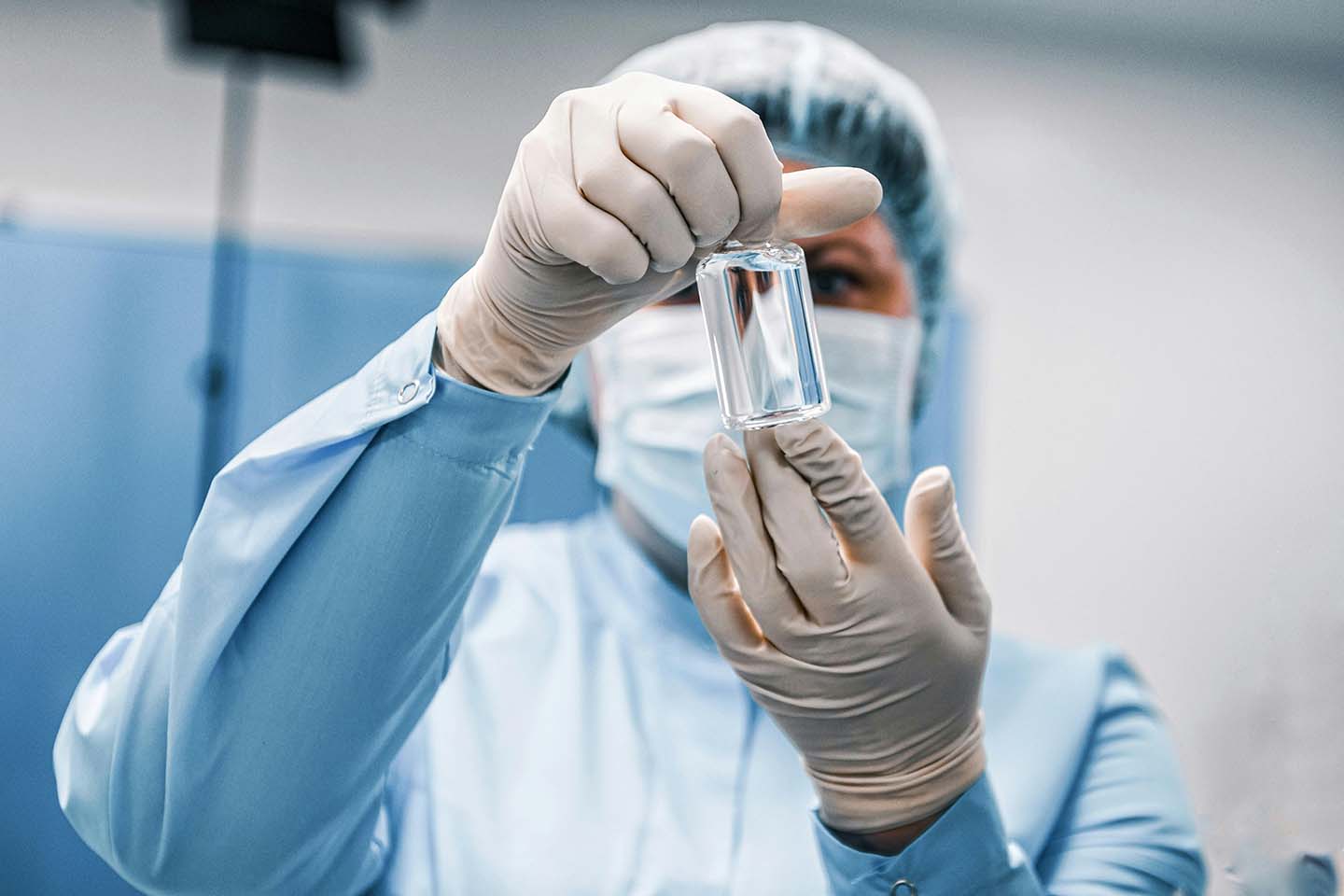
Why are Surgical Gloves So Expensive?
Surgical gloves have to do more than examination gloves. Their manufacture requires a rigorous sterilization process to ensure they maintain sterility from creation to use. Quality assurance and regulatory compliance add cost.
Powdered patient examination gloves are mass-produced and take full advantage of economies of scale. Rubber surgical gloves do not have that advantage. That’s why your best option for finding less expensive surgical gloves is taking advantage of bulk orders for wholesale prices.
Finally, there’s material cost. Polyisoprene is incredibly expensive, and synthetic and natural rubber are relatively costly. Combined with regulatory compliance costs and limited economies of scale, these expenses make surgical gloves comparatively expensive.
Picking Different Types of Surgical Gloves
Different types of surgeries call for various kinds of gloves. Sizing, cost, glove material type—there's lots to think about. But if you’re looking for reliable products for any procedure in any medical field, your best choice is to browse our selection. At Gloves.com, we offer lowest price and fastest shipping guarantees, as well as subscription discounts and free expedited shipping for all orders over $99.

